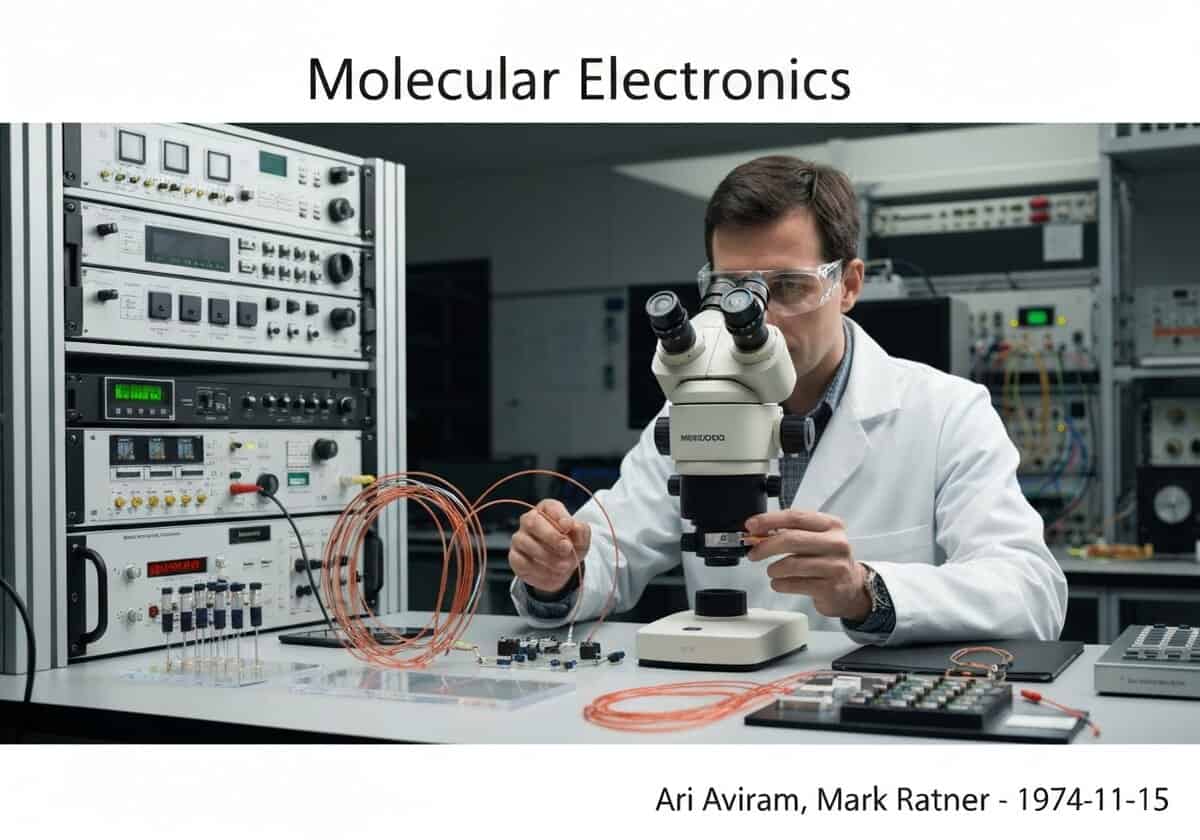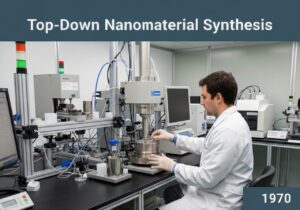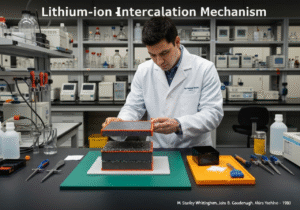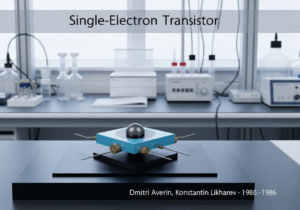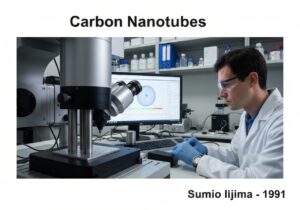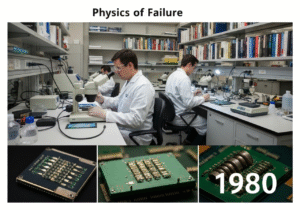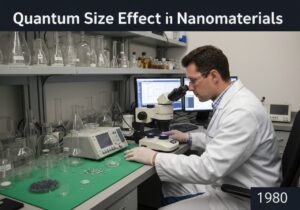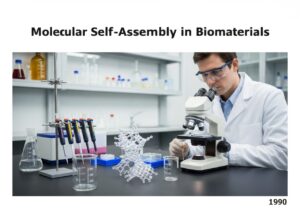L'elettronica molecolare esplora l'utilizzo di singole molecole o di insiemi molecolari su scala nanometrica come componenti elettronici fondamentali. Questo approccio mira a costruire circuiti al limite estremo della miniaturizzazione, ben oltre la tradizionale tecnologia basata sul silicio. I componenti chiave includono fili molecolari, interruttori e raddrizzatori, che sfruttano proprietà della meccanica quantistica come l'effetto tunnel degli elettroni attraverso gli orbitali molecolari per il loro funzionamento.
The concept of molecular electronics, first conceptualized by Ari Aviram and Mark Ratner in 1974, represents a paradigm shift from top-down lithography to bottom-up self-assembly for creating electronic circuits. Their seminal paper proposed a molecular rectifier, a D-σ-A molecule (Donor-sigma bridge-Acceptor), which would allow current to flow preferentially in one direction, analogous to a semiconductor p-n diode. The principle relies on the alignment of molecular energy levels (HOMO and LUMO) under an applied bias voltage. When a voltage is applied, electrons can tunnel from an electrode, through the molecule’s orbitals, to the other electrode. The asymmetry in the D-A structure creates an asymmetric current-voltage (I-V) characteristic, which is the basis of rectification.
Beyond simple rectifiers, researchers have demonstrated molecular wires (e.g., conjugated polymers), switches that can be toggled between ‘on’ and ‘off’ states using light, heat, or electric fields, and even molecular transistors. The primary challenge lies in reliably connecting these tiny molecules to macroscopic electrodes and creating stable, reproducible devices. Techniques like scanning tunneling microscopy (STM) break junctions and mechanically controllable break junctions (MCBJs) are used in laboratory settings to measure the conductance of single molecules. While full-scale molecular computers remain a distant goal, the principles are being applied in areas like molecular sensing, where the electronic properties of a molecule change upon binding to a specific target analyte, and in organic light-emitting diodes (OLEDs), which rely on charge transport through organic molecular films.
Il campo è altamente interdisciplinare e fonde chimica quantistica, scienza dei materiali e fisica della materia condensata. Promette non solo una miniaturizzazione estrema, ma anche nuove funzionalità derivate dalle proprietà quantistiche uniche delle singole molecole, che potrebbero portare a dispositivi con consumi energetici ridotti e modelli computazionali completamente nuovi.

